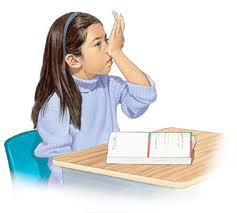

10, Pediatric Allergies in America survey revealed that 313 (62%) of 500 children (less than 18 years of age) diagnosed with allergic rhinitis had SAR. children (9.8%) reported having had hay fever in the previous 12 months.

adults (7.8%) were diagnosed with hay fever, and 7.2 million U.S. SAR afflicts approximately 10 percent of the U.S.
Allergic salute update#
The update retained the terms seasonal and perennial because “hese traditional descriptive terms are clinically useful and allow for accurate categorization of the vast majority of patients.” 3 For our report, we will search for trials involving patients with seasonal allergic rhinitis only. 3, 7 In 2008, the American Academy of Allergy, Asthma and Immunology (AAAAI) and the American College of Allergy, Asthma and Immunology (ACAAI) updated a Joint Task Force Practice Parameter on the diagnosis and management of rhinitis. 2 However, the new scheme is not interchangeable with the traditional one, as different patient populations are defined by each. 6 This new scheme suggests a stepwise treatment approach according to the severity and duration of symptoms. In 2001, the Allergic Rhinitis and its Impact on Asthma (ARIA) international working group proposed a new classification scheme consisting of four categories based on rhinitis severity and duration: 1) mild intermittent, 2) mild persistent, 3) moderate/severe intermittent, and 4) moderate/severe persistent. 3 This is the classification scheme we will use for our report. Traditionally, allergic rhinitis syndromes were categorized as SAR, PAR, and PAR with seasonal exacerbation.
Allergic salute skin#
In children, additional symptoms of rhinitis include the allergic salute (rubbing the hand against the nose in response to itching and rhinorrhea), allergic shiner (bruised appearance of the skin under one or both eyes), and allergic crease (a wrinkle across the bridge of the nose caused by repeated allergic salute). 1 Treatment effectiveness is assessed by improvement of these symptoms and improved quality of life. Many patients also experience symptoms of allergic conjunctivitis, such as itchy and watery eyes. Regardless of the inciting allergen(s), the four defining symptoms of allergic rhinitis are nasal discharge (rhinorrhea), nasal itching, sneezing, and/or nasal congestion. Patients may have either SAR or PAR or both (i.e., PAR with seasonal exacerbations). SAR is distinguished from perennial allergic rhinitis (PAR), which is triggered by continuous exposure to house dust mites, animal dander, and other allergens generally found in an individual’s indoor environment. Although there is geographic variability in the seasonal emergence of allergenic pollens across the United States, tree pollens tend to emerge in the spring, grass pollens in the summer, and weed pollens in the fall. Seasonal allergic rhinitis (SAR), also known as hay fever, is an inflammatory condition of the upper airways that occurs in response to exposure to airborne allergens (typically tree, grass, and weed pollens) in sensitized individuals. Background and Objectives for the Systematic Review


 0 kommentar(er)
0 kommentar(er)
